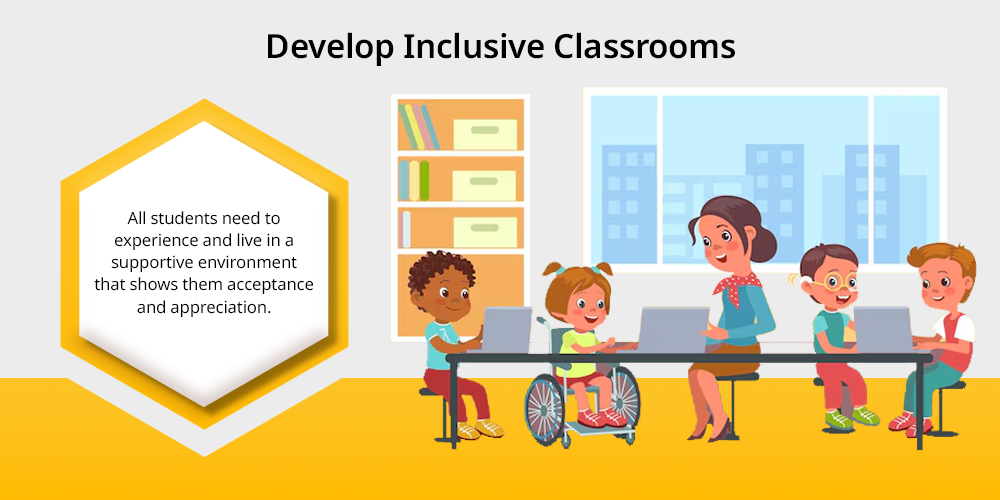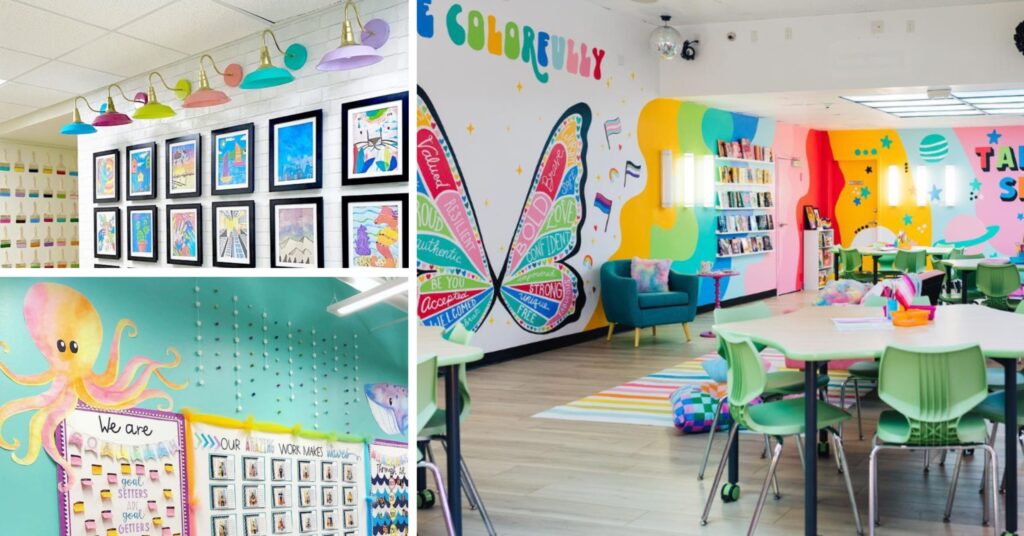Creating an environment where every student feels valued, respected, and supported is the cornerstone of inclusive classroom design. Across India, especially in a verified campus, schools are realizing the immense impact that thoughtful and inclusive learning spaces can have on student performance, social behaviour, and emotional well-being.
In today’s evolving educational landscape, inclusive classroom design is no longer a luxury—it is a necessity. Whether it’s through accessible infrastructure, diversified teaching strategies, or technology integration, the goal is to cater to students of all abilities, backgrounds, and learning styles. This article dives deep into proven, practical ideas for building classrooms that truly support inclusive learning—ideas that have already shown success in top institutions and verified campus across the country.
What Is Inclusive Classroom Design?
At its core, inclusive classroom design refers to creating a classroom environment that accommodates and supports students with diverse needs. This includes:
-
Physical accessibility for students with mobility impairments
-
Sensory-friendly spaces for neurodiverse learners
-
Visual cues and structured routines for students with learning disabilities
-
Collaborative and flexible seating for social inclusion
An inclusive classroom ensures that every child, regardless of their abilities, can participate equally and feel like they belong.
Why Inclusive Classroom Design Matters
Inclusive classroom design has a measurable impact on both academic performance and emotional development. Research shows that students in inclusive settings demonstrate better problem-solving, empathy, and collaboration skills. Teachers also report fewer behaviour issues and more classroom engagement.
When implemented in a verified campus, where infrastructure meets quality and compliance standards, inclusive classroom design becomes scalable and sustainable.
Essential Elements of Inclusive Classroom Design
1. Flexible Seating Options
Rigid seating can hinder learning for many students. A key principle of inclusive classroom design is offering multiple seating choices such as:
-
Standing desks
-
Bean bags
-
Floor seating with cushions
-
Adjustable chairs
This flexibility allows students to choose how they learn best, increasing focus and comfort in a diverse classroom.
2. Accessible Physical Layout
Every inclusive classroom must consider the layout in terms of mobility and navigation. Important features include:
-
Wide aisles for wheelchair users
-
Height-adjustable desks
-
Clear, clutter-free walkways
-
Lever handles instead of knobs for easy access
Schools on a verified campus often lead in implementing such accessible infrastructure, setting the gold standard for others to follow.
3. Universal Design for Learning (UDL)
UDL is a proactive approach in inclusive classroom design. It offers multiple ways for students to:
-
Receive information (visual, audio, tactile)
-
Express learning (oral presentations, writing, art)
-
Stay engaged (gamified learning, peer collaboration)
This design philosophy ensures that no child is left behind, regardless of their learning preference.
4. Assistive Technology Integration
Modern inclusive classrooms rely heavily on technology. Common tools include:
-
Screen readers for visually impaired students
-
Speech-to-text apps
-
Augmented communication devices
-
Interactive whiteboards
A verified campus often invests in these technologies to ensure every learner has equitable access to the curriculum.
5. Quiet Zones and Sensory Corners
Many students, especially those with autism or ADHD, benefit from having access to quiet, calm spaces. An inclusive classroom design often includes:
-
Noise-cancelling headphones
-
Soft lighting and calming textures
-
Weighted blankets or sensory toys
These elements support emotional regulation and improve focus in high-stimulus environments.
6. Culturally Responsive Décor
Diversity isn’t just about ability—it’s also about culture. Inclusive classroom design promotes diversity through:
-
Multilingual posters
-
Books featuring different races, religions, and family structures
-
Culturally inclusive holiday celebrations
This approach fosters mutual respect and helps students feel seen and valued.
7. Peer Learning and Collaborative Spaces
An essential aspect of inclusive classroom design is encouraging peer learning. Strategies include:
-
Buddy systems
-
Group project zones
-
Shared responsibility activities
Such collaborative setups promote empathy, leadership, and shared accountability, especially in verified campuses that promote holistic development.
Case Study: How a Verified Campus Implemented Inclusive Classroom Design
One of the shining examples is a verified campus in Bangalore that redesigned its entire primary wing to reflect inclusive classroom design principles. Highlights included:
-
Installing automatic door sensors for students with mobility issues
-
Creating “talking walls” with interactive elements
-
Introducing daily sensory breaks
-
Training teachers in inclusive pedagogies
Results within the first year showed improved attendance, better student morale, and a 20% increase in overall academic performance.
Teacher Training: The Backbone of Inclusive Design
No inclusive classroom can function without well-trained educators. Inclusive classroom design must be supported by:
-
Ongoing professional development
-
Workshops on learning disabilities
-
Peer observation and mentoring
Many schools in verified campuses run in-house inclusion programs for teachers, ensuring consistency and competence across all grades.
Parent Involvement in Inclusive Design
Families play a vital role in shaping effective inclusive classroom design. Their input is valuable in:
-
Sharing student-specific needs
-
Offering feedback on accommodations
-
Participating in classroom activities and IEP meetings
An inclusive classroom thrives when schools foster strong parent-teacher relationships.
Budget-Friendly Inclusive Design Tips
Creating an inclusive classroom doesn’t always mean massive investment. Here are some low-cost ideas:
-
Use DIY fidget toys
-
Repurpose mats and cushions for floor seating
-
Use color-coded folders for visual learners
-
Turn an unused corner into a reading nook
Even schools with limited budgets can implement inclusive classroom design in creative, cost-effective ways.
Measuring the Success of Inclusive Classroom Design
To ensure that inclusive classroom design is working effectively, schools can monitor:
-
Student engagement levels
-
Academic improvement
-
Reduction in disciplinary actions
-
Parent and teacher feedback
These indicators help refine practices and show stakeholders the positive impact of inclusion.
How the Best School in Dehradun Champions Inclusive Design
The best school in Dehradun stands as a beacon of inclusive classroom design. Their holistic model includes:
-
Inclusive sports events
-
Accessible libraries
-
Life skills curriculum
-
On-site counselors and therapists
Their classrooms are thoughtfully designed to celebrate differences and unlock every child’s potential, embodying the true spirit of education.
Final Thoughts
Inclusive classroom design is not a trend—it’s a transformation. From physical layout to emotional inclusivity, every detail matters in creating a classroom where students of all abilities can thrive. With the right planning, training, and commitment, every school can turn into a safe, inspiring, and accessible space for all learners.
When implemented on a verified campus, these principles become even more powerful—setting benchmarks in Indian education. As seen in institutions like the best school in Dehradun, inclusive design fosters academic excellence, emotional intelligence, and lifelong learning.


